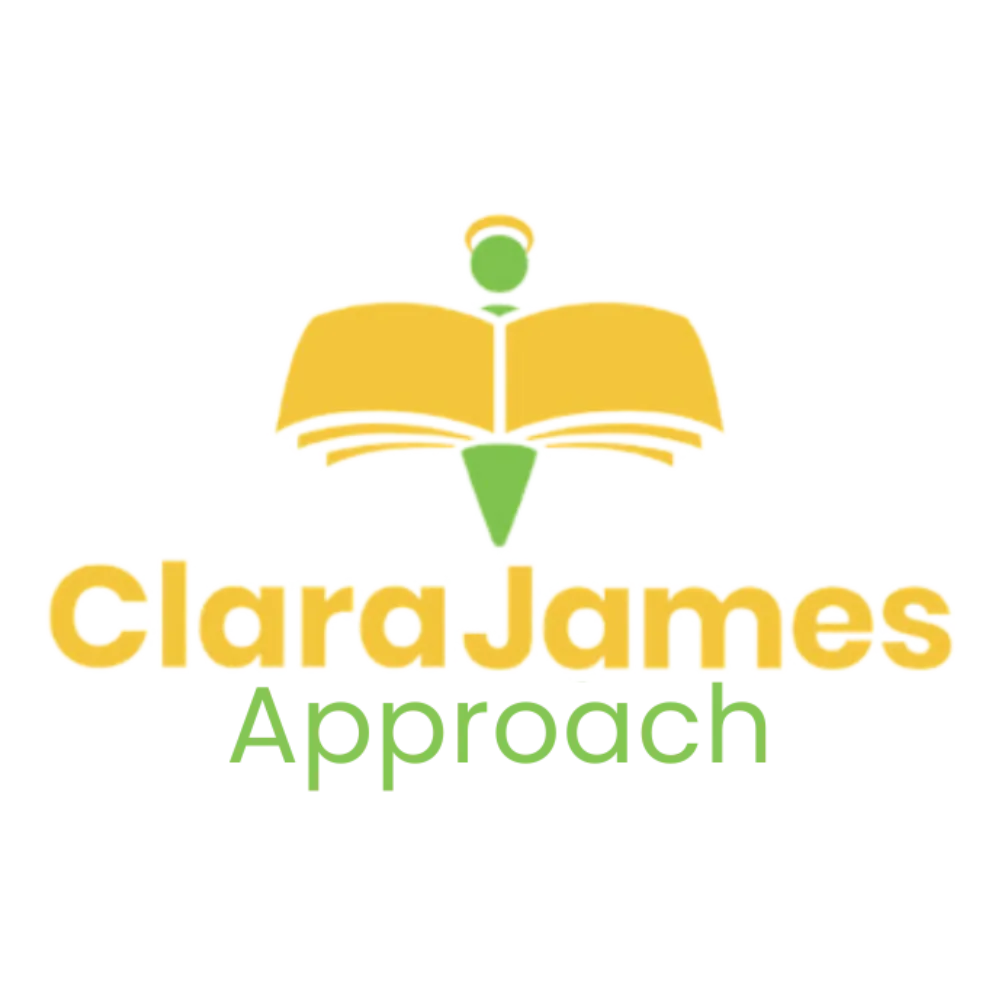EXPLORE, LEARN, EXCEL with
The Clara James Approach
BLOG PAGE
Creative Resources for Primary Children
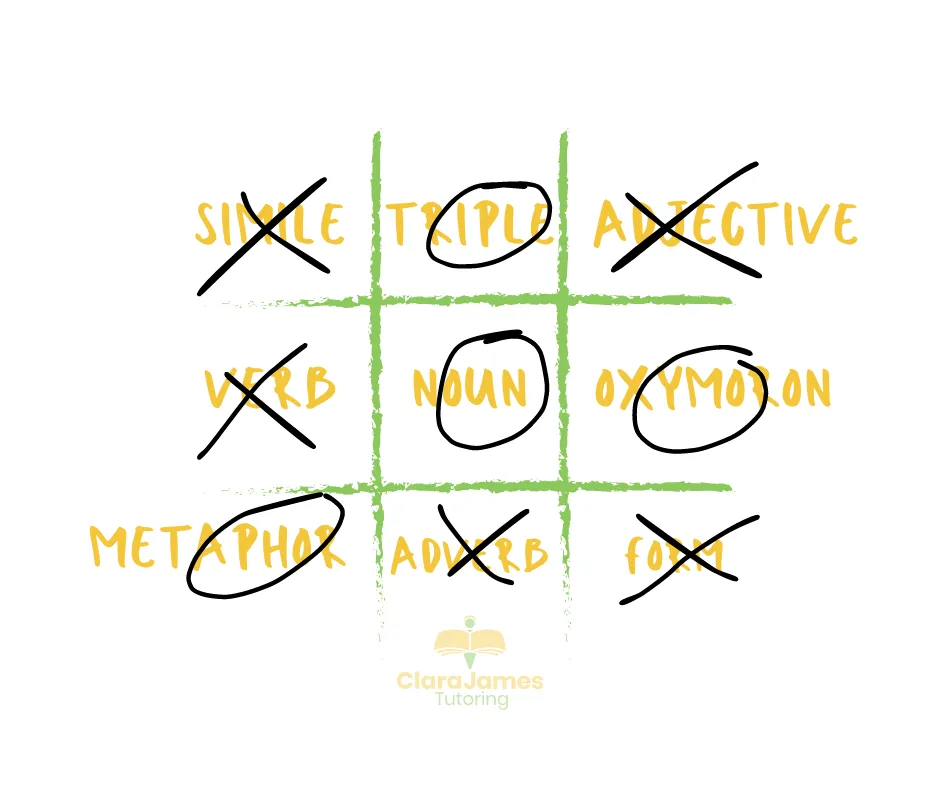
5 ways to use noughts & crosses to support your child's education
Who would have thought that with some very small amendments noughts and crosses could be made into an educational (but still fun!) Game?
Do you find helping your child to revise or learn new things can be hard work? You want to make it fun for them but you’re not too sure how?
I want to show your how you can support your child with learning their:
times tables,
forming letters or numbers correctly
extending their vocabulary,
learning definitions,
spellings,
translating
through this one simple game.
The basic principle of how you play this game will remain the same throughout.
Draw a grid consisting of 2 horizontal lines which are crossed by 2 vertical lines:
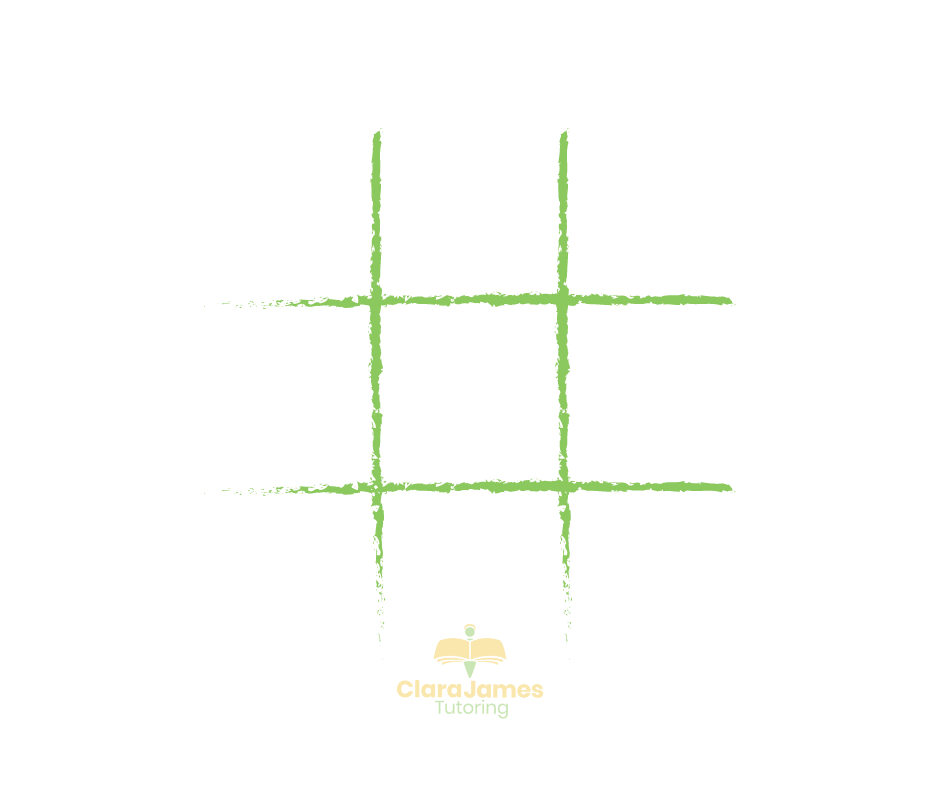
The game is meant for 2 players.
One of you will be a nought; the other player will be a cross.
Take it in turns to draw your nought or cross in the square with the intention of being the first to get a line of 3 either: diagonally, vertically or horizontally.
The first person to achieve this wins.
Times tables
In this version of the game you need to decide which times table you are multiplying by before you start.
You now play the game as you would in the traditional method, however, before you can claim your square you need to multiply the number in it by your chosen times table.
For example supposing we have chosen to multiply by 8.
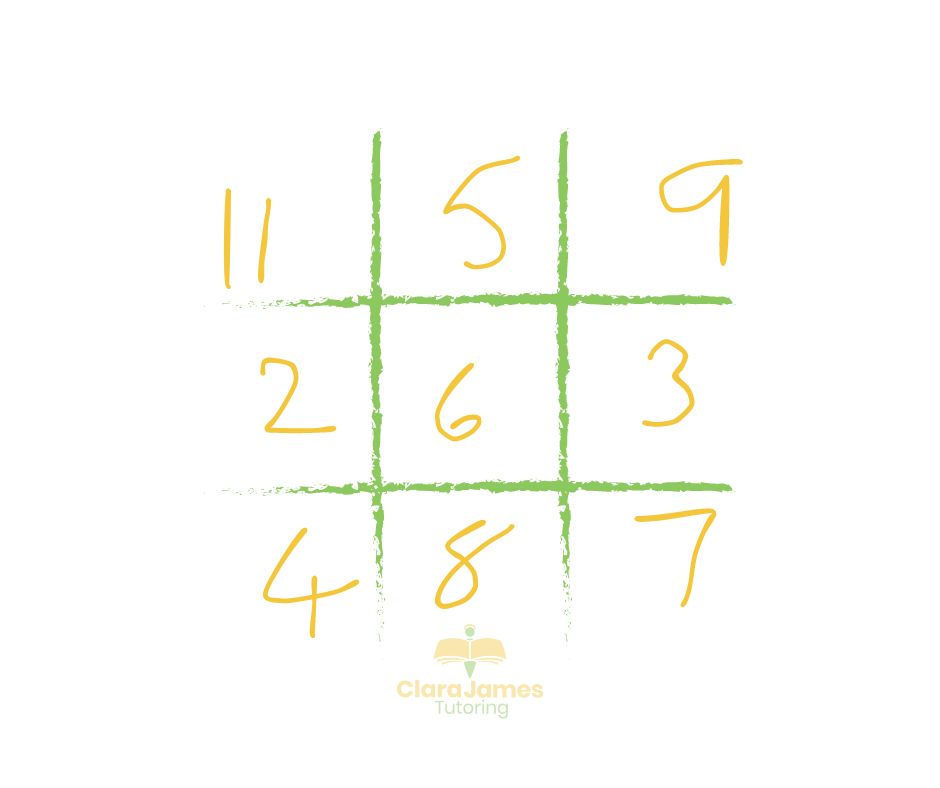
If I wanted to go in the top left hand space and there was a number 11 written in it, I would have to work out the answer to 11 x 8 before I can write my cross in the gap.
Although I’ve suggested using times tables here, you could insert any sum into the square to be solved. I’ve put anything from making simple number bonds to 10, 20 or 100 to placing a simultaneous equation that needs solving in the square.
Alternatively, you could put in fractions that need converting to decimals. Maybe, put angles that need to be measured.
Adapt the game so that it is at a suitable level for your child or the child that you are working with.
Never make it too hard, a challenge is good but if it is too much of a challenge the child will lose heart and no longer want to participate.
Traditionally the purpose of the game has always been to use noughts and crosses to complete the square and achieve the line of three. However, this would be a good opportunity for children to practice writing digits that they struggle with.
Hand writing
Many children get their b’s and d’s the wrong way around p’s and q’s are other letters that children find tricky to grasp or 5’s and S’s. Though these are the most common there are no doubt other letters which cause children issues.
So, when you play the game, instead of using a nought or cross use these letters which are causing difficulties instead?

Be subtle about it. I might start with an “S” because that’s the first letter in our dog’s name. Perhaps you could start with a d because that’s the first letter of dog.
Then, in the next game I could perhaps do a “d” because we have a dog and you did d last time. You could do “b” because your favourite colour is blue…
This will provide the necessary repetition needed to learn but in a less monotonous and more discrete way than endless worksheets and writing line after line of the letter.
Descriptive language
Before you start put a letter in each square of the grid. Like you did for the times tables version, but this time use letters instead.
Now pick a theme. It can be anything ranging from countries, food, animals or something that your child is learning about at school. An example might be the personality traits of a character in a book they are reading as a class.
This time before you claim your square you need to think of a relevant word starting with that specific letter; for example if our theme was countries and the letters to choose from included an E, I would probably choose England as my country.
I could now put my nought or cross in the square containing an “E”.
If your child needs to think more creatively with their descriptive language, you could find a picture of something/someone and before claiming your square you would need to think of a work to describe the picture.
Put letters in there as a starting letter if you wished to make it more complicated or you could be allowed to place your word in any square.
IS THERE A SHORT LIST OF FACTS YOUR CHILD NEEDS TO LEARN?
Names of shapes.
Dates in history.
Scientific terms.
Terminology used in a specific subject.
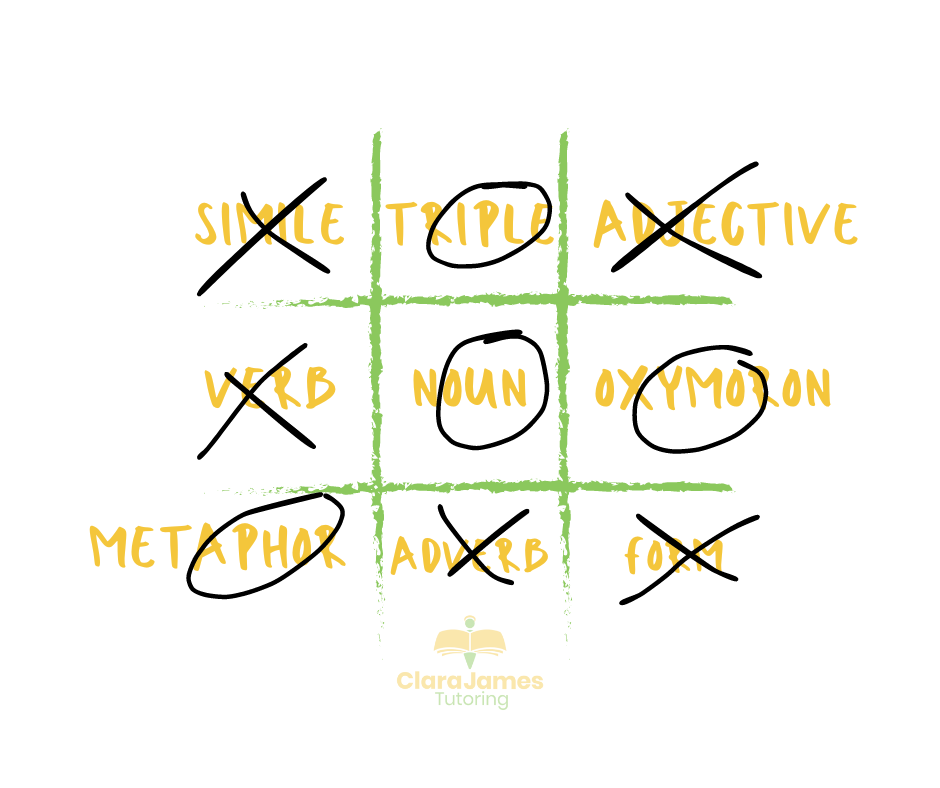
Place one of the terms in each square.
This time before you are allowed to claim your square you have to give a definition to the meaning of the word located in that particular place.
As always the first person to get a line of 3 wins.
If your child brings home spellings each week to learn this can be an additional method for learning them.
This version of the game will be more appropriate as the child starts to become familiar with the words in the list.
For this version of the game a word from the spelling list needs to be written in the square before it can be claimed, if the child is struggling offer guidance but try not to do it for them.
Alternatively, if you child is still learning their phonics blends you could put one in each square and ask the child to think of a word containing that letter or blend.
THIS VERSION COULD BE DONE IN TWO WAYS:
Write a word in each square which needs to be translated into the appropriate language before the square can be claimed
Maybe, you could have a picture in the square. You would need to name what this item is (in the appropriate language) before being able to claim the square.
I hope from here you can see how one simple game can be so easily adapted to help with so many areas of learning.
I am a firm believer that if you are enjoying yourself you are inevitably more relaxed. If you are relaxed, you are more susceptible to taking in new information.
The point of noughts and crosses is that it’s a game and games are supposed to be fun. Please remember this as it will help the child’s confidence and enthusiasm to participate.
In this respect I think we’re all the same: if we’re enjoying ourselves, we will show more enthusiasm and a greater willingness to get involved and learn.
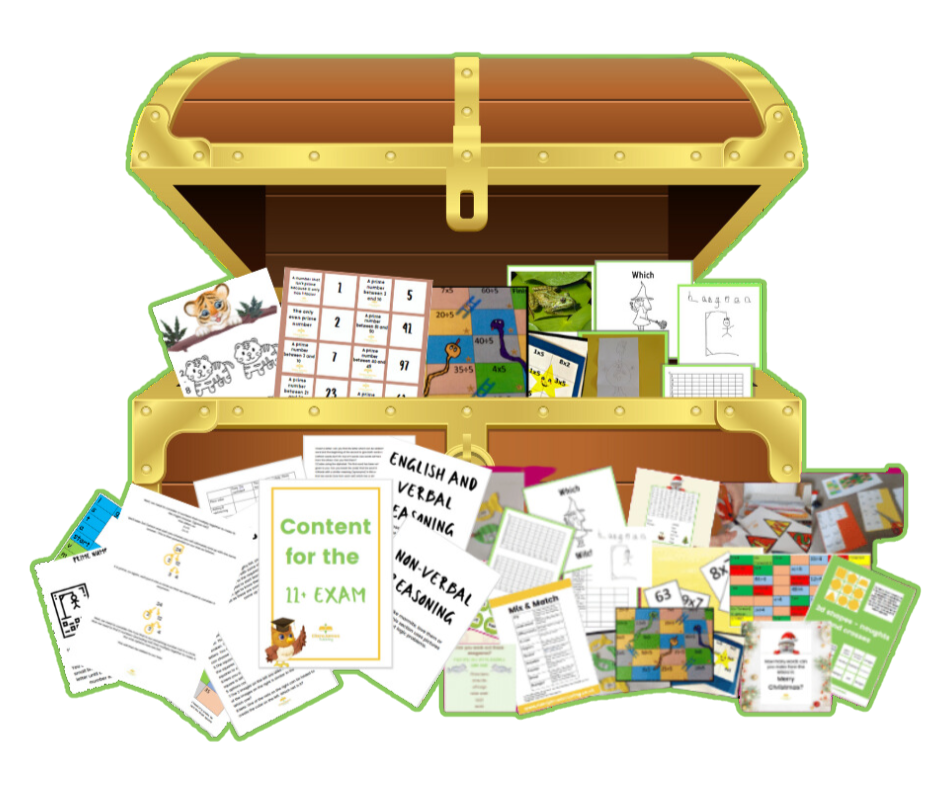
Our goal at Clara James Tutoring is to make learning fun and accessible to everyone. If children are engaged in what they are doing they are more likely to want to participate, if they are enjoying it, they are more likely to relax and retain the information.
If they are retaining the information it will help boost their knowledge and with knowledge comes confidence.
If you have a child who enjoys learning through games and being more creative, and you enjoy spending time with them, you might be interested in the Clara James Approach, the membership group we have put together to support you in supporting your primary school aged child with their maths and English.
Interested?
Click here to learn more: The Clara James Approach
Stay Connected with Our Latest Stories and Updates!
Explore our blog for insightful articles, tips, and news to inspire and inform.
Whether you're seeking practical advice or simply a good read, our blog has something for everyone. Don't miss out on our fresh contents!
© Copyright 2022 The Clara James Approach
